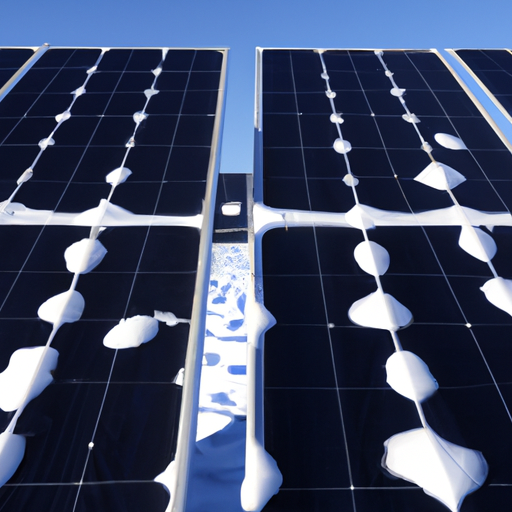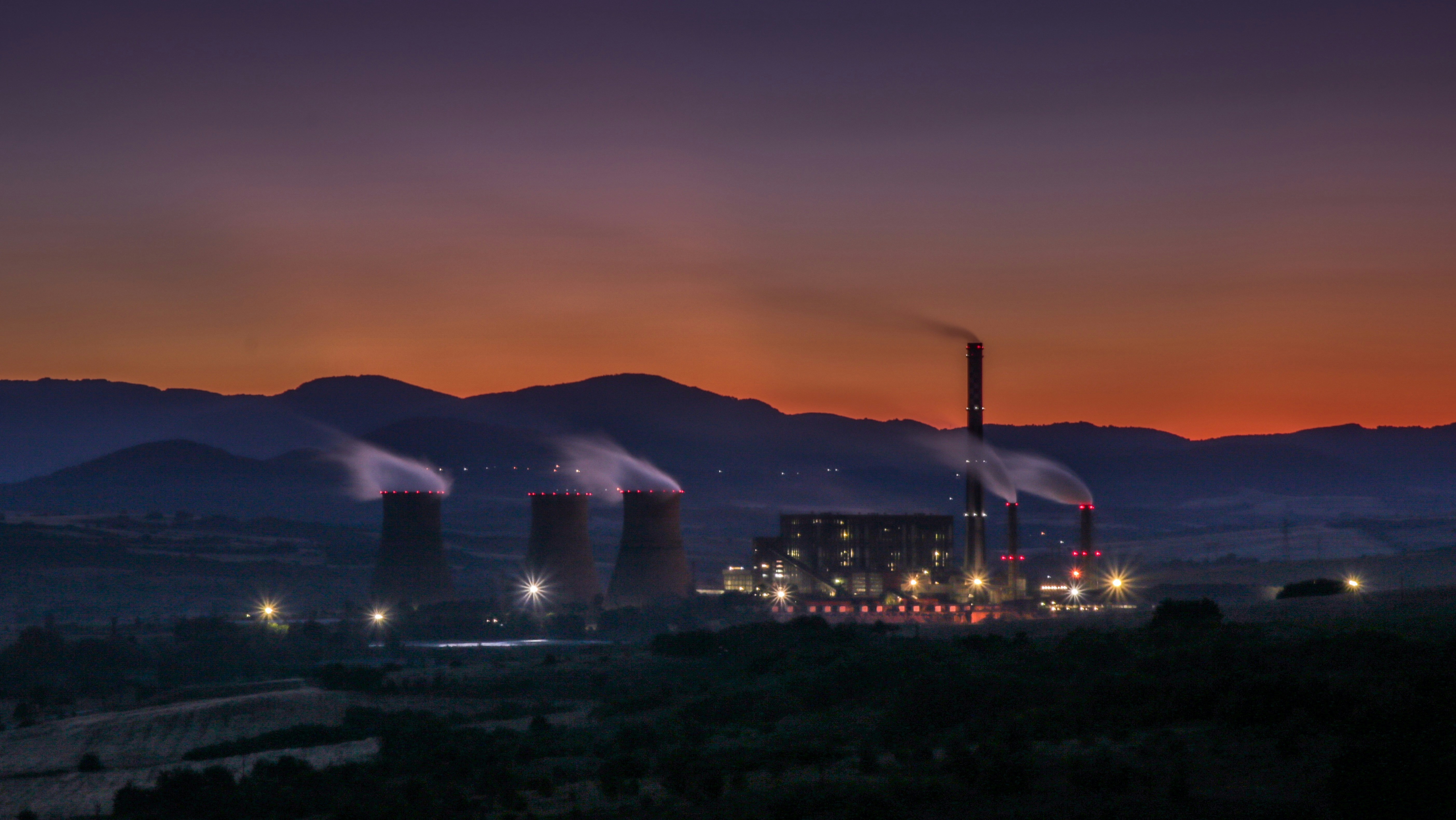If you’ve already taken the illuminating step of installing solar panels as your primary source of energy, then kudos to you! This comprehensive guide will assist you in finding ways to optimize your solar output during the winter months. In this essential read, you’ll uncover simple and factual strategies to make the most out of your energy source, even when the sun’s radiance is at its weakest. Illuminate your surroundings with clean, sustainable energy, and discover how to fend off the cold with the warmth of maximized solar power — Navigating your solar system through the chill of the season has never been easier.
Understanding the Winter Solstice Impact
Explaining what the winter solstice is
You might be familiar with the term ‘winter solstice’, but it’s worth understanding exactly what it means. Essentially, it refers to the day of the year with the least daylight – the shortest day and longest night. It generally occurs on December 21 in the Northern Hemisphere, marking the onset of winter. This is due to the tilt of the Earth’s axis, orienting the planet further from the Sun. Understanding the winter solstice and its impact on sunlight is paramount for optimizing solar power output.
How winter solstice affects solar output
The fewer daylight hours and the low angle of the sun during the winter solstice can dramatically reduce solar output. The sun’s rays aren’t as direct, reducing the amount of sunlight that strikes the solar panels. This causes the panels to generate less electricity than during other times of the year, impeding their performance.
Importance of adjusting to the winter solstice
Adjusting your solar setup for the winter solstice is key to maximizing output. This includes tweaking solar panel angles to better capture the sun’s rays and considering the addition of technologies like solar trackers. Responding to the effects of the winter solstice will help you get the most out of your solar power system in the colder months.
Optimization via Solar Panel Position
Why solar panel positioning matters
The solar radiations received by your panels significantly rely on their positioning. If your panels are not correctly aligned, they won’t absorb as much sunlight to convert into electricity. Therefore, it is crucial to ensure that they are positioned for maximum exposure.
Ideal solar panel angles for winter
In the winter months, the sun is lower in the sky, so it’s beneficial to tilt your panels at a higher angle. Ideally, solar panels should be angled equal to your latitude during winter. You can use an online calculator to determine the optimal angle for your location.
Tips for adjusting solar panel angles
Adjusting solar panel angles requires some care. If you can, adjust them in the morning when the panels are cool to prevent thermal shock. Be careful not to scratch or damage the panels during adjustment. If your panels are installed on your roof and you’re uncomfortable or unsafe doing this, it’s best to hire a professional.
Strategies to Improve Solar Panel Efficiency
Utilizing solar panel coatings
One way to counteract the effects of winter weather conditions is to use solar panel coatings. These unique solutions can improve light transmittance and reduce the build-up of snow or frost. Some coatings even have self-cleaning properties, keeping your panels performing optimally.
Effective power management
The way you manage power can also impact your solar output. Efficiently using power by switching off idle devices, replacing energy-hogging appliances with energy-efficient ones, and utilizing a power management system can help optimize output.
Understanding the effects of temperature on solar panels
Interestingly, cooler temperatures can improve solar panel efficiency as solar panels are usually tested at Standard Test Conditions around 25°C (77°F). High temperatures can cause efficiency to drop. But remember, while winter temperatures might be solar-friendly, the reduced sunlight hours can still lower overall production.
Weather Impact on Solar Output
Challenges of winter weather
Winter weather poses various challenges for solar panel efficiency. Shortened daylight hours, snow, and ice cover, and lower temperatures all can impact solar output.
Snowfall and solar panel efficiency
Heavy snowfall can cover solar panels, blocking sunlight and reducing or stopping power production. However, most panels are designed to withstand heavy snow loads, and their smooth surfaces make it easier for snow to slide off.
Mitigating the impact of winter weather conditions
To mitigate the impacts of winter weather, consider options such as installing solar panel covers, using heat tapes to melt snow, or adding a tilt mount to encourage snow to slide off. Regularly cleaning and maintaining your panels can also have a positive impact.
The Role of Solar Battery Storage
How solar battery storage works
Solar battery storage provides a way to store excess solar power generated during sunny hours for use when the sun isn’t shining. It works by storing the surplus energy generated by the solar panels directly into the battery for later use.
Maximizing your battery storage in winter
As solar panels may produce less energy during winter, it’s crucial to get the most out of your battery storage system. To do this, conserve power wherever you can, prioritize the charging of your battery during peak production hours, and ensure your battery is in good condition and adequately insulated against freezing temperatures.
Benefits of investing in solar battery storage
Investing in a solar battery storage system helps ensure that you’re always covered, even when the weather isn’t cooperating. It provides energy independence, increased savings, and a reliable energy solution during power outages. This proves to be even more beneficial during winter when solar panel output can fluctuate.
Importance of Solar Panel Maintenance in Winter
Routine solar panel cleaning
Clean solar panels are more efficient. That’s why it’s essential to regularly remove dust, leaves, and other detritus from your panels, especially before the winter season. You also want to ensure snow is promptly removed to allow maximum sunlight exposure.
Professional inspection of solar panels
Just like your car requires regular tune-ups, solar panels also need periodic inspections by professionals. This helps identify any potential issues or malfunctions that could impact efficiency and ensures your panels are ready for the winter months.
Repairs and upkeep suggestions
If, during the inspection, any problems are noticed with your solar panels, timely repairs or replacements are crucial. Aside from fixing faulty panels, consider investing in additional protective measures like sturdy mounts and durable cables, especially considering the harsh winter conditions and storms.
Increasing Solar Power with Solar Trackers
The role of solar trackers
Solar trackers are devices that continuously orient your solar panels towards the sun, capturing maximum sunlight throughout the day. This movement increases the length of time your panels are in direct sunlight, maximizing output.
Improving winter solar output with solar trackers.
While positioning your panels at an ideal angle can help capture more sunlight, using solar trackers can add significantly to this advantage, especially during winter when sunlight is at a premium. By following the sun’s path across the sky, these devices ensure your panels receive the best possible exposure throughout the day.
Investing in an efficient solar tracking system
Investing in a robust solar tracking system can increase your winter solar output substantially, making it a worthwhile investment for many households.
Maximizing Solar Output with Energy Conservation
How energy conservation affects solar output
The less energy you use, the more you have. Simple energy conservation measures can help extend the productivity of your solar system during the winter months.
Omnipresent conservation methods
Some standard conservation practices include using energy-efficient appliances and lighting, insulating your home better, and adjusting your thermostat by small increments. Simple actions like turning off lights when you leave a room and using energy-saving modes on appliances can also make a big difference.
Implementing energy conservation strategies alongside solar
Combining solar power usage with energy conservation strategies can significantly enhance your overall energy savings and contribute to your system’s efficiency in winter.
The Benefits of Net Metering in Winter
Understanding net metering
Net metering is a billing system that credits solar energy system owners for any excess electricity they contribute to the grid. This especially comes in handy for balancing out times when solar production might be less than energy usage, like on shorter winter days.
Maximizing solar output with net metering
Net metering can economically maximize your solar output in winter. The surplus power your system generates on long sunny days can be fed back into the grid, accruing credits. These credits can then be used to offset the energy you draw from the grid during periods of lower production, like in winter.
Implementing net metering strategies
To make the most out of net metering, it’s crucial to stay informed about your solar energy production and consumption and understand your local utility’s net metering policies.
The Use of Solar Power Boosters
Enhancing solar panel output with boosters
In conditions of lower light or partial shading, solar power boosters can enhance the output of your panels. They improve the panel’s efficiency by optimizing the voltage-to-current ratio, helping your system perform more effectively in winter.
Types of boosters suitable for winter
Maximizers and micro-inverters are notable types of boosters suitable for winter. Maximizers optimize each panel’s performance, while micro-inverters convert DC power to AC power at a panel level, avoiding overall system inefficiencies.
Integration of boosters to the existing solar system
The integration process can be quite straightforward with the right technicians. If you decide that a solar booster is right for your needs, a professional can seamlessly incorporate it into your existing solar setup.
So, as the cold days settle in, consider these strategies for optimizing your solar power output. With a thorough understanding and strategic adjustments and additions, you can enjoy an efficient, reliable source of solar energy, even during winter.



